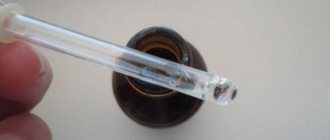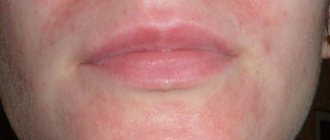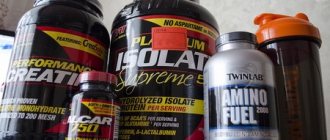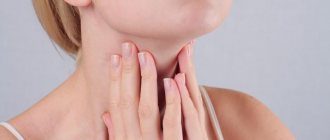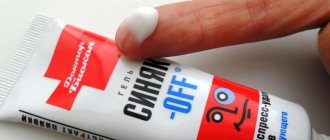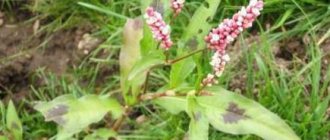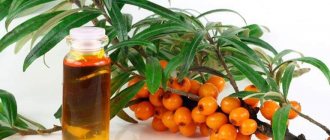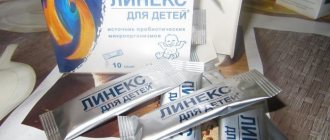The antiseptic properties of boric acid were known many decades ago.
It was actively used in medicine and households. It is good because it is odorless, colorless, and therefore does not leave any marks on the body or clothes. Due to its weak acidic effect, boric acid was used as an antiseptic, without fear of aggravating the wound .
Today, the properties of boric acid have been studied in detail - all the positive and negative qualities are known. Therefore, we will dwell on all its characteristics and tell you about all the possibilities of this substance.
Boric acid is presented on the pharmacological market in several versions - powder, liquid (aqueous and alcoholic solution), ointment.
It must be used with extreme caution, since studies have shown that this acid is a highly toxic substance. It easily penetrates the skin into the body and accumulates in the liver and kidneys.
With prolonged use and large dosages, this substance has a bad effect on brain function. Be sure to follow the instructions. The use of boric acid is strictly contraindicated for children and pregnant women .
Boron, although harmful, has sufficient benefits for the body when used correctly. This acid has an anti-pediculosis effect. In the old days, it was even prescribed to small children to treat prickly heat.
In addition, boric acid is good for ear inflammation . A cotton swab was immersed in this liquid and then placed in the ear.
Acid, as a disinfectant, was widely used for various purposes - medicinal and household. After studies were conducted that confirmed the toxicity of boron, such widespread use was limited.
general characteristics
Boric powder is a white crystalline substance. It dissolves poorly in cold water, but better when heated. Therefore, alcohol solutions of boric acid are most often used, where it retains all its properties. This substance has become widespread since the end of the 19th century, when its antiseptic properties were discovered. Then boron powder was used to treat wounds, treat diseases of the ears and eyes, and remove calluses and diaper rash. An aqueous solution of this substance was tasteless and odorless and did not irritate the skin. But since the end of the 20th century, the use of boric acid in medicine has been limited. After all, more effective and safe antiseptics have appeared, and an overdose of boric acid is dangerous, especially for children. Although ordinary people still often use drugs based on it out of habit.
Boric acid is most often produced in powder form. It is obtained by mixing hydrochloric acid with borax. A white, odorless and tasteless powder is formed. In nature, this powder is found only in some salt lakes in Asia and America.
Forms of release of boric acid
Some believe that boric alcohol, which is sold in pharmacies, is boric acid. But in fact, acid is a white powder, and alcohol is its alcohol solution. The substance itself usually contains from 1 to 4%. In addition, you can purchase boric ointment at the pharmacy. This is a combination of acid and Vaseline 1:10. It is used for calluses, pediculosis, and for healing some wounds.
But the most popular is boric acid in powder. Many people are interested in where to buy this product. Indeed, in this form it can be used not only for medicinal purposes, but also for treating plants, killing insects and for other purposes. It is best to buy boron powder at a pharmacy. It is packaged in 10 and 20 grams, and a bag is not expensive at all - from 10 to 25 rubles. You can purchase industrial boric acid for household purposes. Gardeners know where this product is sold, since it is bought in hardware stores among fertilizers and insecticides.
Features of the action
Boric acid powder is valued for its antiseptic properties. But studies have shown that this substance also has antipediculosis, antifungal, antiparasitic, fungistatic, astringent and weak antibacterial effects. The powder is used in the form of solutions, ointments or powders only externally. It has a disinfecting effect for various diseases of the skin and mucous membranes. It is especially effective for otitis media, conjunctivitis, fungal diseases, thrush, pyoderma, pediculosis, eczema and dermatitis. The action is due to the fact that the main substance penetrates pathogenic microorganisms and destroys their proteins.
What is boric acid used for?
This powder is better known as an external antiseptic for treating the skin. It is used in the form of an aqueous or alcohol solution, as well as as part of various ointments. It has antiseptic, antifungal and antiparasitic effects.
In addition, boron powder is widely used in agriculture and industry:
- as a top dressing, it accelerates the appearance of ovaries and increases productivity;
- is included in many fertilizers;
- protects wood from fungi and rotting;
- used in the production of ceramics, fiberglass, enamels;
- to kill insects.
Application in medicine
Until the mid-20th century, boric acid in any form was widely used for medical purposes. The eyes of newborns and the nipples of nursing mothers were even treated with an aqueous solution of the powder. But research by scientists has determined that such use of boric acid can be dangerous, since its ingestion leads to poisoning. This remedy is especially difficult for young children to tolerate. Instead of boric acid, more effective and safe products are now used.
A solution of boric acid is used in the treatment of various dermatological diseases. It is effective for eczema, diaper rash, dermatitis, pyoderma. It helps well with fungal diseases and pediculosis. The powder eliminates odor in shoes and relieves excessive sweating of the feet. For otitis media, the solution is dripped into the ear.
How does it help and what does it treat?
Boric acid has antimicrobial properties. It coagulates the proteins of the microbial cell, thereby disrupting the permeability of its biological membranes, which leads to a delay in the growth and development of pathogenic bacteria and fungi. Given these properties, boric acid can be used in the following situations:
- Dermatitis.
- Eczema.
- Pyoderma.
- Diaper rash.
In addition to dermatological pathology, aqueous solutions are used in the treatment of conjunctivitis, and as ear drops for acute and chronic otitis. They are sometimes recommended for use in colpitis.
Indications in cosmetology
The substance can also be used for cosmetic purposes. Boric acid is used to combat some aesthetic imperfections on the skin of the face:
- Acne.
- Excess fat content.
- Dark spots.
Using acid, you can cleanse the skin of impurities and blackheads, dry out inflammatory elements and prevent their further appearance. Solutions are useful for strengthening hair and nails, in the treatment of hyperhidrosis (excessive sweating).
Boric acid is a simple and affordable disinfectant that can be used in dermatology and cosmetology.
Instructions for the use of boric acid for adults
Despite the fact that studies have proven the low effectiveness and toxicity of the product, it is still used frequently. If you do it correctly, it will not cause harm, but you should not use this substance often, as the acid accumulates in the body. In addition, it can only be used by adults.
For treatment at home, you can purchase ready-made medications: alcohol solution, ointments, boric vaseline. But it is best to buy boric acid in powder and make solutions yourself. They acquire medicinal properties when their concentration is 2%. Most often it is recommended to prepare a solution of 3-4%. It is made using hot water. Add half a teaspoon of powder to 100 ml. Acid does not dissolve well in cold water. You can also make an alcohol solution or mix it with Vaseline.
The powder is most often used in the form of an aqueous or alcohol solution with a concentration of 2-4%. There are some features depending on the pathology:
- for otitis or ear pain, instill 3 drops of the product three times a day, the course of treatment is no more than a week;
- You can make a compress from boric alcohol on a sore ear;
- wash your eyes with an aqueous solution for conjunctivitis;
- dissolve 2-3 tablespoons of powder in a small amount of warm water and make foot baths for fungal diseases of the feet;
- For pimples and acne, wipe problem areas with a cotton pad soaked in boric alcohol.
Directions for use and dosage
According to the instructions for boric acid, adult patients with inflammation of the outer eye membrane are advised to rinse the conjunctival sac (the cavity between the front surface of the eyelids and the back surface of the eyeball) with a 2% aqueous solution.
To treat ear inflammation, a gauze swab (turunda) is moistened in an alcohol solution, after which it is inserted into the ear canal. In some cases, instillation of 3-5 drops into the ear canal with a frequency of procedures of 2 or 3 times a day may be indicated.
For diaper rash, eczema or pyoderma, treatment is indicated using lotions with a 3% alcohol solution on the affected areas of the body.
For neuralgia and inflammatory lesions of muscle tissue in places where painful sensations are localized, it is recommended to apply boron-zinc-naphthalan paste.
For inflammatory processes in the vagina, treatment with boroglycerin is performed.
As an anti-pediculosis agent, boric acid is used in the form of an ointment. Apply it to the scalp in an amount of 10-25 grams (which depends on the thickness and length of the hair, as well as the degree of infection), leave for 20-30 minutes, then rinse thoroughly, wash the hair with soap or shampoo and rinse it under running water.
Patients with psoriasis are advised to rub grease ointment into the affected areas (in the direction of hair growth). To enhance the effect, the area of the elbows and shins after treatment can be covered with wax paper and secured with a band-aid. During therapy, it is recommended to bathe more than once every 2-3 days. If folliculitis (purulent-inflammatory processes affecting the hair follicle) appears, it is recommended to take a break from treatment for 7-10 days. During a break, you should take baths with soap.
Contraindications and side effects
Boron powder can only be used externally, in the form of solutions or mixtures. This substance is toxic if consumed internally. Boric acid is excreted by the kidneys, but it is absorbed faster into the blood and penetrates the placental barrier. Therefore, if kidney function is impaired, this substance accumulates in the body, which leads to poisoning. In addition, even external use is contraindicated during pregnancy and lactation. After all, solutions of boric acid easily penetrate the skin and mucous membranes.
In addition, such drugs are contraindicated in case of individual intolerance and acute inflammatory skin diseases. Do not use the substance if you need to treat a large surface area of the skin or if there are ulcers and open wounds.
Even the correct external use of boric acid powder solutions can lead to side effects. In addition to allergic reactions, these may include nausea, vomiting, and intestinal dysfunction. In addition, sometimes there is tissue swelling, the development of eczema, depression of central nervous system functions, anemia, convulsions, and the development of a state of shock.
Side effects
Medicines have side effects. Boric acid was no exception.
A pharmacological agent can cause:
- Toxic reaction: nausea;
- weakness;
- headache;
- peeling;
If these symptoms appear, it is recommended to stop using the drug and consult a doctor.
Can it be used by children?
For an adult, the lethal dose of boric acid is from 5 to 20 grams, depending on how well the kidneys are working. In children, kidney function is still imperfect, so they need a smaller dose to become poisoned. Boric acid is especially dangerous for newborns. Therefore, since the end of the 20th century, this substance has been contraindicated for use in children. Boric acid poisoning is difficult for them to tolerate; convulsions, urination problems, vomiting develop, and the child falls into a coma. Deaths have also been described after the use of boric acid in children, so this treatment is now prohibited.
Overdose
Indicators of overdose due to unintentional ingestion:
- General poisoning: vomiting;
- stomach ache;
- diarrhea;
- erythematous rash;
- diseases of the central nervous system;
With prolonged use, chronic intoxication is observed:
- Eczema;
- Stomatitis;
- Anemia;
- Convulsions;
- Kidney and liver diseases;
- Jaundice.
In case of overdose, consult a doctor immediately.
The use of the drug internally is prohibited, it is very toxic.
Household use
People often buy boric acid powder to kill insects. It is especially effective against ants. The powder is poured onto ant paths, and insects on their paws carry its crystals into the anthill. If the powder gets into the body of insects, it leads to convulsions and their death.
Boric acid in powder is also often used against cockroaches. It is necessary for this substance to penetrate the insect’s body with food, then it will lead to paralysis and death. For this purpose, various baits are made by adding this powder to them. It has no smell or taste, so cockroaches eat such baits. To do this, the powder is mixed with raw or boiled yolk. You can also add boiled potatoes or vegetable oil. The mixture should be formed into balls and placed in places where insects gather.
special instructions
What is boric acid?
Boric or orthoboric acid, in accordance with the value of its dissociation constant, is a weak acid. Acid properties are determined not by the abstraction of the H+ proton, but by the addition of the hydroxide anion.
Boric acid is easily replaced by most other acids from solutions of their salts (borates). Salts are produced, as a rule, from polyboric acids, the acid properties of which are much more pronounced (for example, tetraboric acid H2B4O7).
The formula of the substance is H₃BO₃. The name in Latin is Acidum boricum.
Use of Boric acid in gardening
Boric acid has found wide use in vegetable gardens and gardens as a microfertilizer for a wide variety of crops.
The use of boron preparations in gardening and horticulture for pre-sowing treatment of seeds, the main application to the soil before planting seed, spraying and foliar feeding of plants during the growing season helps to improve the nutrition of the ovaries and increases the flow of sugars to the sexual reproductive organs of plants.
Dicotyledonous plants, which include almost all fruit and vegetable crops, absorb 10 times more boron than cereals, which belong to the class of monocotyledonous plants. The largest amount of microelement accumulates in the pulp of apples.
The most sensitive to boron deficiency are grapes, potatoes, tomatoes, fodder root crops, pears, apple trees, and sugar beets. If its supply is insufficient, the growth point is suppressed, the internodes are shortened, the fragility of the leaf petioles increases, the tubers grow small and some crack, the growing point of the stem in tomatoes turns black and the fruits become covered with brown spots of dead tissue, fruit necrosis develops on apple trees and pears.
The effectiveness of using boron as a fertilizer for plants is highest on sod-podzolic and peat soils.
Spraying tomatoes, strawberries, cucumbers, and cabbage with boric acid helps to increase the ovary and stimulates the formation of new growth points, increases the concentration of vitamins in fruits and increases the resistance of crops to adverse meteorological conditions.
Feeding tomatoes and strawberries (as well as a number of other fruits, berries and vegetables) with boric acid can reduce the likelihood of diseases associated with boron deficiency (including hollow stems and red/brown rot in cauliflower; heart rot, scab and cork tissue in root crops, scab on root crops).
How to spray grapes and other fruit and berry plants? The greatest increase in yield can be achieved by spraying twice: during the period of bud setting and during flowering.
For treatment, use a solution of boric acid (5-10 g) and zinc sulfate (5 g). Even a one-time procedure before flowering can increase plant productivity by 20-36%. The addition of boric acid mixed with superphosphate during the softening period of the berries helps to increase the sugar in the berries and improve their taste.
Boric acid for ants and cockroaches
Boric acid for cockroaches is used in several ways. Each of them is based on the fact that the insect will eat the substance. When a cockroach enters the body, boric acid provokes its dehydration. Death after contact with the powder or eating bait occurs within 1-3 days (the poison acts most quickly on young individuals).
Most often, the product is simply sprinkled on all baseboards in the house, as well as other places where insects may appear. If you succeed, you can sprinkle the powder on the cockroach: when it returns to the nest, it will “infect” its other relatives.
The correct way to use the powder involves spraying it in a thin layer through a special spray bottle or bottle.
If using a plastic bottle with a flat cap, add a few small coins to the powder (they will loosen the product each time you shake the bottle), then cut a small hole in the cap. Use rubber gloves when spraying the product.
Having closed the hole in the cork with your fingers, you need to shake the bottle several times (a mist of powder will float inside). Now you can remove your finger from the hole and lightly squeeze the bottle so that the powder particles from the bottle are sprayed over the surface to be treated. All crevices, cracks and baseboards need to be treated (especially in the bathroom and kitchen), as well as the area around the sink and refrigerator.
Another popular recipe against cockroaches involves using powder (50 g) with 1 chicken egg yolk. Balls are formed from the resulting mixture, which are then laid out in the favorite habitats of cockroaches.
In addition, you can fight cockroaches by placing cardboard boxes sprinkled with a mixture of boric acid and flour near baseboards, water pipes and radiators. It is very important that insects do not have a chance to get to the water: unlike ants, cockroaches cannot do without water. To do this, you should thoroughly wipe the sinks at night and tighten all the taps well.
Boric acid affects ants at the level of the nervous system. After absorption in the intestines of insects, the substance begins to spread along their peripheral nerves and seriously disrupts the functioning of the nervous system. After a few hours, disturbances lead to paralysis and then death of the ant.
There are different recommendations on how to poison ants. You can place baits in the house with boric acid and glycerin, egg yolk or honey, or you can simply sprinkle ant paths with powder.
Grains of the product cling to the legs of insects and thus end up in the anthill. That is, an ant that runs through a scattering of boric acid not only becomes infected itself, but also infects those ants that do not leave the colony.
